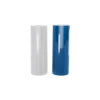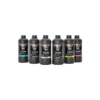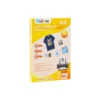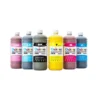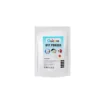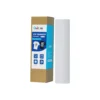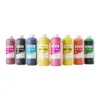This guide will walk you through everything you need to know to use DTF transfer film sheets correctly and efficiently—from preparation to final transfer—plus a few expert tips and frequently asked questions.


What Are DTF Transfer Film Sheets?
DTF Transfer Film Sheets are specially coated PET (polyethylene terephthalate) films designed for Direct-to-Film printing. In this printing process, designs are printed directly onto these transparent sheets using DTF ink, then coated with hot melt powder adhesive, and finally transferred onto fabric using a heat press.
Unlike sublimation or heat transfer vinyl, DTF transfer film sheets allow for:
- Vivid color printing with CMYK + White
- Application on almost any fabric (cotton, polyester, leather, blends, etc.)
- Fine details and gradients
- Soft and durable finishes
The use of DTF Transfer Film Sheets in fabrics is not particularly well defined. For example, DTF can also be used on polyester fabrics. It is just more suitable for sublimation printing processes. See also: Can You Press DTF Sheets On Polyester?
Preparing to Use DTF Transfer Film Sheets
Before starting the printing process, ensure you’ve completed the following setup:
- Use a compatible DTF printer with CMYK+White ink setup
- Make sure your DTF ink and hot melt powder are well-stored and not expired
- Install the correct DTF RIP software profile for color accuracy
- Load the film coated side up into your printer—check manufacturer markings
- Prepare your working area to be dust-free to avoid film contamination
Proper setup ensures your printed images bond well to the film and transfer cleanly to garments.
Many people will consider saying that it’s not a good idea to try to replace DTF ink with regular ink. See also: Do Not Use Regular Printer Ink For DTF Transfers



How to Use DTF Transfer Film Sheets Step by Step
Let me walk you through the process step by step.
1.Print Your Design
- Load the DTF transfer film sheet into your printer (coated side facing the printhead).
- Print the image in mirror mode, especially if it includes text.
- Ensure white ink is printed as a base layer—this is key for bright, opaque prints.
2.Apply Hot Melt Adhesive Powder
- While the ink is still wet, evenly sprinkle hot melt powder onto the design.
- Shake gently to spread the powder across the design without clumps or gaps.
- Shake off any excess powder for clean edges.
3.Cure the Film
- Use a curing oven or hover a heat press at ~150°C (300°F) without pressure for 2–3 minutes.
- The powder should melt smoothly, forming a cohesive adhesive layer.
- Avoid over-curing or under-curing—the powder should turn glossy but not brown.
4.Heat Press the Film to Garment
- Preheat your heat press to 125–165°C (260–330°F).
- Place the garment on the platen and press briefly to remove moisture and wrinkles.
- Position the DTF film face down (design side on fabric).
- Press with medium pressure for 6–15 seconds, depending on fabric type.
5.Cool and Peel
- Allow the garment to cool completely (cold peel method).
- Once cooled, gently peel off the film in one smooth motion.
- You should see vivid, durable, and finely detailed results.
See also: How To Print On DTF Transfer Film?

Tips for Better Results With DTF Transfer Film Sheets
- Always test on a sample fabric before mass production
- Monitor your curing temperature—too hot or too cold affects bonding
- Use a dust-free environment to prevent debris ruining the print
- Regularly agitate your white ink to avoid settling and clogging
- Wash garments inside-out in cold water to extend print longevity
FAQ: Common Questions About DTF Transfer Film Sheets
Q1: Can I use a regular inkjet printer with DTF film sheets?
- No. You need a DTF-compatible printer that supports pigment-based DTF ink and white ink.
Q2: Do I have to use white ink when printing?
- Yes. White ink provides the base layer for vibrant color and visibility, especially on dark fabrics.
Q3: What happens if I peel the film too early?
- Premature peeling can cause the design to lift or partially transfer. Always wait until the fabric has cooled.
Q4: Can I reuse a DTF film sheet?
- No. Each sheet is single-use only. Once a design is transferred, the film cannot be reused.
Q5: Is DTF better than HTV or sublimation?
- It depends on your needs. DTF works on more fabrics and offers finer detail than HTV, and unlike sublimation, it doesn’t require polyester-only materials.
Conclusion: With the right tools, settings, and a bit of practice, using DTF Transfer Film Sheets becomes a highly effective way to create long-lasting, full-color garment designs. Follow these steps carefully and you’ll enjoy excellent transfer results every time.

